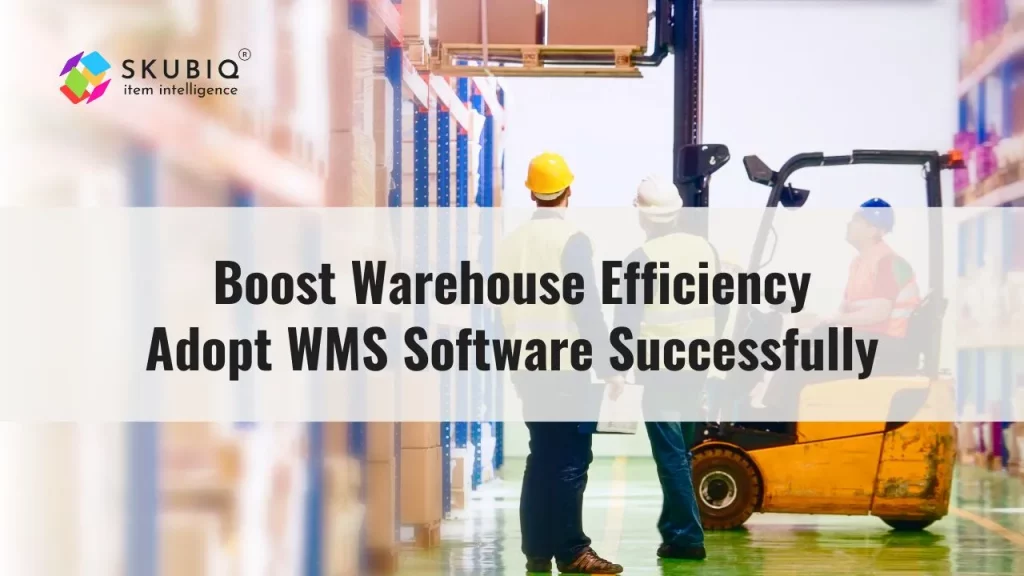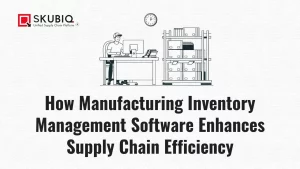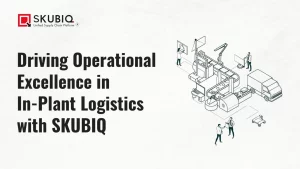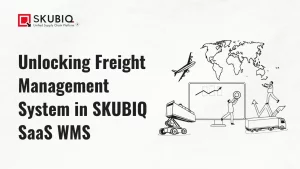Before diving into the process of generating support for WMS software adoption, it’s crucial to assess the current state of the warehouse. Identify pain points, inefficiencies, and areas for improvement. Understanding the existing challenges will help tailor the approach to garnering support effectively.
Communicating the Need for Change
Effective communication is key to initiating any significant change. Clearly articulate the reasons behind the decision to adopt WMS software. Highlight how it aligns with the organization’s strategic goals and how it can address the challenges faced by the warehouse. Transparency and clarity build trust and buy-in from employees.
Creating a Sense of Urgency
Creating a sense of urgency can motivate employees to support WMS software adoption. Highlight the competitive landscape, industry trends, and the potential consequences of maintaining the status quo. Emphasize the benefits of early adoption and the risks of falling behind competitors. Urgency fosters a proactive attitude towards change.
Identifying Champions and Influencers
Identifying champions and influencers within the organization can significantly aid in generating support for WMS software adoption. These individuals are respected and trusted by their peers and can influence opinions and behaviors. Empower them to champion the cause, advocate for WMS software, and rally support among their colleagues.
Tailoring the Message to Different Stakeholders
Not all stakeholders have the same priorities and concerns. Tailor the message about WMS software adoption to resonate with different groups within the warehouse. For example, emphasize efficiency gains and cost savings for management, improved job satisfaction for frontline workers, and enhanced customer service for customer-facing teams.
Providing Hands-On Experience
Offering hands-on experience with WMS software can demystify the technology and alleviate concerns. Arrange demo sessions or pilot programs where employees can interact with the software in a controlled environment. Encourage them to explore its features, ask questions, and provide feedback. Practical experience builds confidence and familiarity.
Addressing Technical and Training Needs
Ensure that employees have the technical infrastructure and training necessary to effectively use WMS software. Provide access to suitable hardware, such as barcode scanners and mobile devices, and ensure robust IT support for software implementation. Offer comprehensive training programs tailored to different roles and skill levels.
1. Technical Infrastructure
Evaluate existing hardware like barcode scanners and computers, and upgrade as necessary to support WMS software. Investing in reliable equipment upfront prevents technical glitches.
2. Comprehensive Training
Understand the eligibility criteria and restrictions associated with flat rate shipping options offered by carriers. Some items may not qualify for flat rate pricing or may require additional packaging considerations. Evaluate product characteristics and shipping requirements to determine the suitability of flat rate shipping for different items.
3. Ongoing Support
Provide continuous assistance through dedicated support channels like help desks. Encourage open communication to address challenges promptly and improve user experience.
Fostering a Culture of Continuous Improvement
Emphasize that WMS software adoption is not the end goal but part of an ongoing journey of continuous improvement. Encourage a culture where employees are empowered to identify inefficiencies, propose solutions, and adapt to changing circumstances. Position WMS software as a tool for enabling innovation and driving progress.
Measuring and Communicating Success
Establish clear warehouse KPIs to measure the success of WMS software adoption. Track key metrics such as inventory accuracy, order fulfillment rates, labor productivity, and customer satisfaction. Regularly communicate progress towards these goals to employees, highlighting successes and areas for improvement. Celebrate achievements and milestones along the way.
Conclusion
Generating support throughout the warehouse for the adoption of WMS software is a multifaceted process that requires careful planning, communication, and engagement. By understanding the current warehouse landscape, communicating the need for change, creating a sense of urgency, identifying champions, tailoring the message, providing hands-on experience, and addressing technical and training needs.
Fostering a culture of continuous improvement, and measuring success, organizations can successfully navigate the challenges of adoption and reap the benefits of enhanced efficiency and productivity. With a committed and supportive workforce, the warehouse can thrive in an increasingly competitive environment.
Frequently Asked Questions (FAQs) About WMS Software Adoption
Warehouse Management System (WMS) software is a digital solution designed to streamline and optimize warehouse operations. It helps warehouses manage inventory, track goods movement, optimize storage space, improve order fulfillment accuracy, and enhance overall efficiency. By automating tasks and providing real-time visibility into warehouse activities, WMS software significantly boosts productivity and reduces operational costs.
For third-party logistics companies (3PLs), WMS software offers several advantages. It enables 3PLs to efficiently manage multiple clients' inventories, track goods across various warehouses, optimize warehouse space utilization, and enhance order processing accuracy. Additionally, WMS software provides 3PLs with valuable insights into inventory levels, allowing them to offer better inventory management services to their clients.
When selecting WMS software, it's essential to consider several key features to ensure it meets the specific needs of your warehouse or 3PL operation. Some crucial features to look for include inventory tracking and management, order management, receiving and shipping capabilities, warehouse layout optimization, integration with other business systems (such as ERP or CRM), real-time reporting and analytics, and scalability to accommodate future growth.
Successful adoption of WMS software requires careful planning, effective communication, and comprehensive training. Start by gaining buy-in from key stakeholders and addressing any concerns or resistance to change. Provide thorough training to warehouse staff on how to use the software effectively and offer ongoing support as they adapt to the new system. Regularly measure performance metrics to track progress and make necessary adjustments to ensure success.
The return on investment (ROI) for WMS software adoption can vary depending on factors such as the size of the warehouse, the complexity of operations, and the efficiency gains achieved through software implementation. However, studies have shown that warehouses and 3PLs can typically expect to see significant ROI within a relatively short timeframe, often recouping their investment through cost savings, increased productivity, reduced errors, and improved customer satisfaction.



